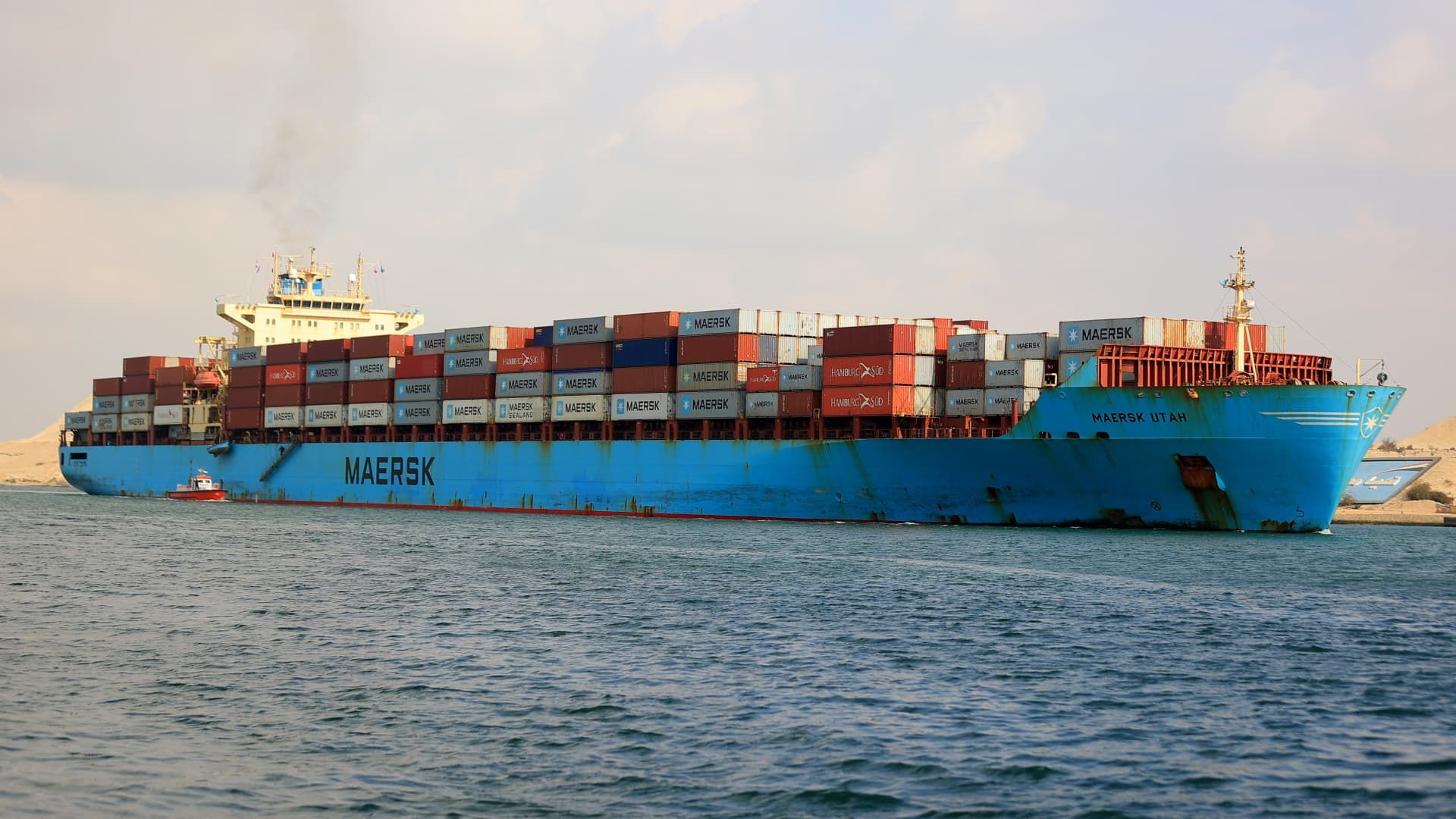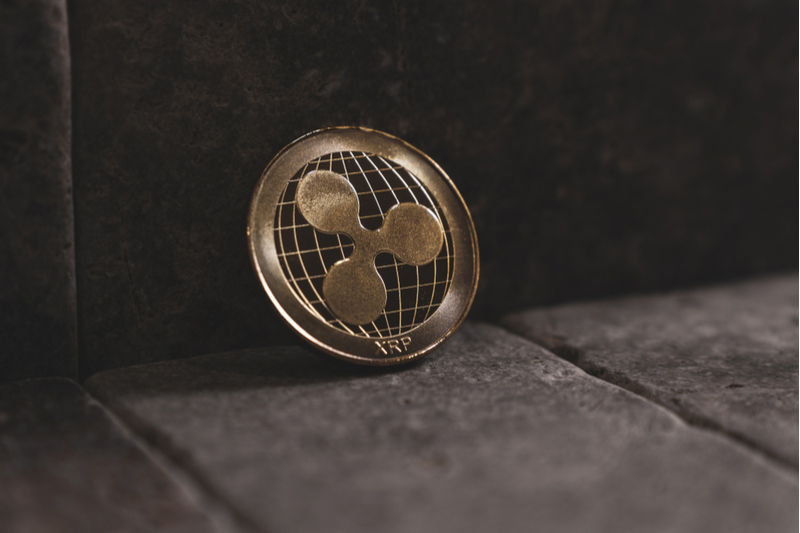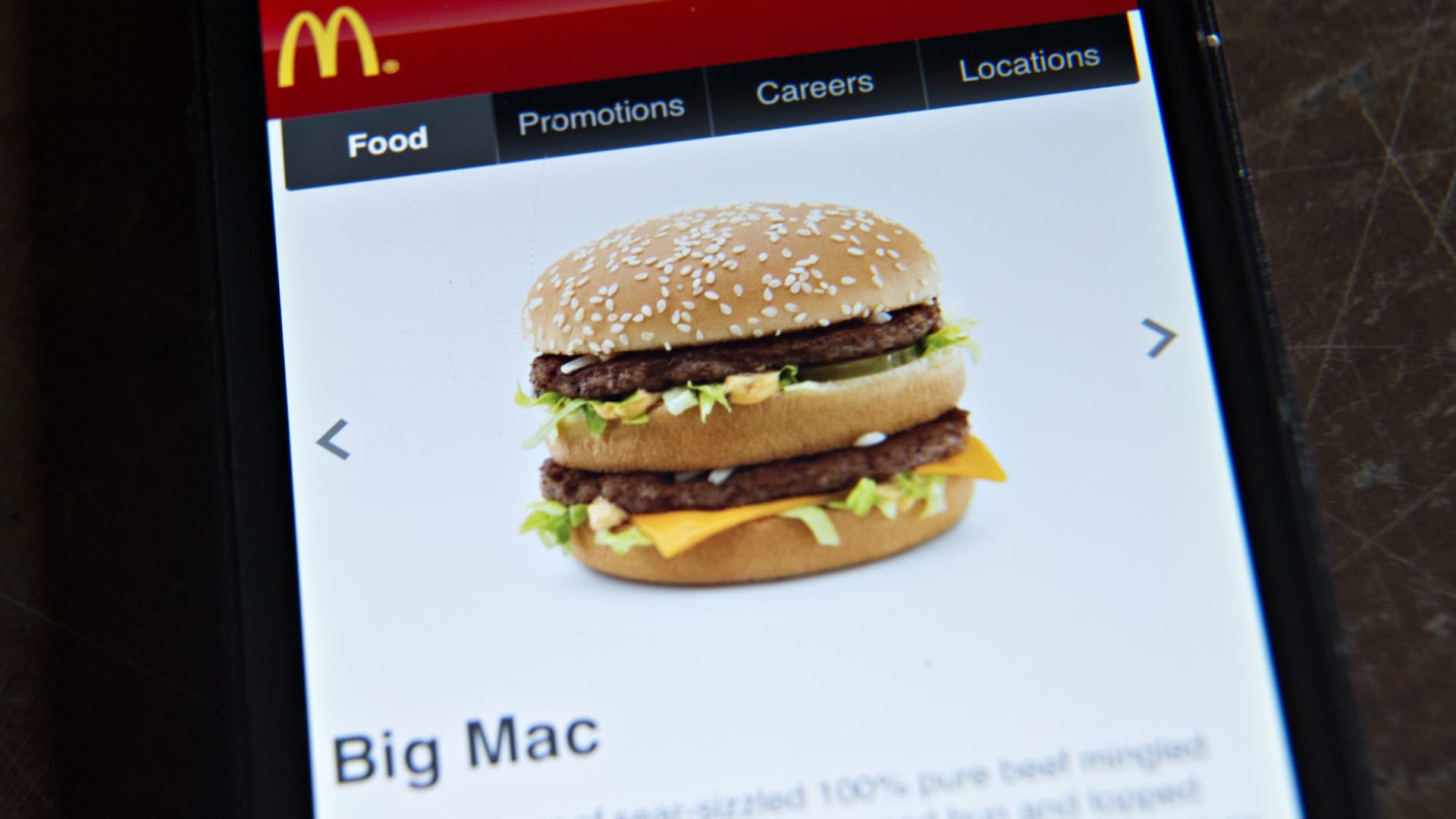A cargo ship crosses the Suez Canal, one of the most important artificial waterways, in Ismailia, Egypt, on December 29, 2023. (Photo by Fareed Kotb/Anadolu via Getty Images)
Anadolu | fake images
The threat to global trade in the Red Sea remains high, even with efforts to protect commercial vessels from attacks by Iran-backed Houthi militants based in Yemen.
Danish shipping giant MaerskTuesday’s decision to suspend transits through the Red Sea and Gulf of Aden until further notice underscores the difficulty of the U.S.-led initiative, called Operation Prosperity Guardian. US Navy helicopters, returning fire, sank three of the four Houthi ships that attacked the Maersk Hanzghou over the weekend, the US military said.
Because of the threat, more commercial ships are moving away from the Red Sea and instead around the Cape of Good Hope at the southern tip of Africa, analytics provider MarineTraffic told CNBC. This has led to an increase in container rates from Shanghai.
So far, the situation has affected $225 billion in trade, according to estimates. In total, according to the cargo company Kuehne+Nagel, it has affected 330 ships. The total Capacity is estimated at 4.5 million containers, or 20-foot equivalent units (TEU). The value of a container destined for Suez is $50,000, according to the transport consultancy MDS Transmodal.
Global trade data provider Kpler said the number of ships doing so rose to 124 this week from 55 last week and from 18 a month ago. However, there has certainly been a modest increase in the number of container ships in the Red Sea, with 21 on Tuesday, up from 16 on December 26.
“At the same time, our analysis of traffic through the Bab al-Mandeb Strait for all vessels combined reveals a consistent downward trend in crossings for both north- and south-bound vessels,” said Jean- Charles Gordon, director of ship monitoring at Kpler. (The strait connects the Red Sea with the Gulf of Aden, which flows into the Arabian Sea in the Indian Ocean.)
This increases the risks for Operation Prosperity Guardian. To achieve results, the task force will need extensive naval coordination, according to U.S. Navy Rear Adm. (Ret.) Mark Montgomery, a fellow at the nonpartisan Foundation for the Defense of Democracies who served as director of Senate Armed Forces policies. Committee under the command of Senator John McCain.
“We will have to group them into loose convoys, coordinate maritime transport and have to be ahead with helicopters to prevent small boats from reaching choke points,” said Montgomery, who highlighted the enormous expense of firing numerous missiles that cost millions of dollars. dollars each.
The coalition needs to use “deterrence by denial,” which is a strategy that aims to thwart an action by making it unlikely to succeed. An example would be missiles that shoot down Houthi missiles or drones, he said. The operation also requires “deterrence through punishment,” Montgomery added. The actions of US helicopters over the weekend are an example.
He acknowledged the Biden administration’s concern about escalation, “but a lack of deterrence could also lead to escalation by the adversary,” Montgomery said.
“The United States has been the sole guarantor of free and open trade and has always done something about it,” he said.
However, American leadership has created some tension. Ami Daniel, CEO of data firm Windward and a former Israeli navy officer, told CNBC that the branding of the US-led coalition led France to want to protect only companies based in its country. . The CMA CGM, a French ocean carrier, is escorted by that country’s navy.
“Countries are protecting their interests. What I see is a lack of understanding of how shipping and global trade works,” Daniel said. “Trade is more than a flag with which a ship is associated. 130 ships are owned and operated by companies domiciled in the United States, but they do not have a US flag. When you expand the flag association, there are nuances.”
But Montgomery rejected this idea, saying the United States has been labeling coalition working groups this way for 30 years.
“This is an excuse, not a legitimate complaint,” Montgomery said.
Still, operators are making case-by-case decisions about whether to go through the Red Sea and Egypt’s Suez Canal, which may lead to equipment imbalances and potential shortages in Asia as transit times increase, according to Goetz Alebrand. , head of shipping at DHL Global Shipping.
“In light of the current challenges in the Suez Canal, many shippers are opting for the longer route around the Cape of Good Hope to ensure the safety of crews and cargo,” he said.
–CNBC Graphics Gabriel Cortes.










